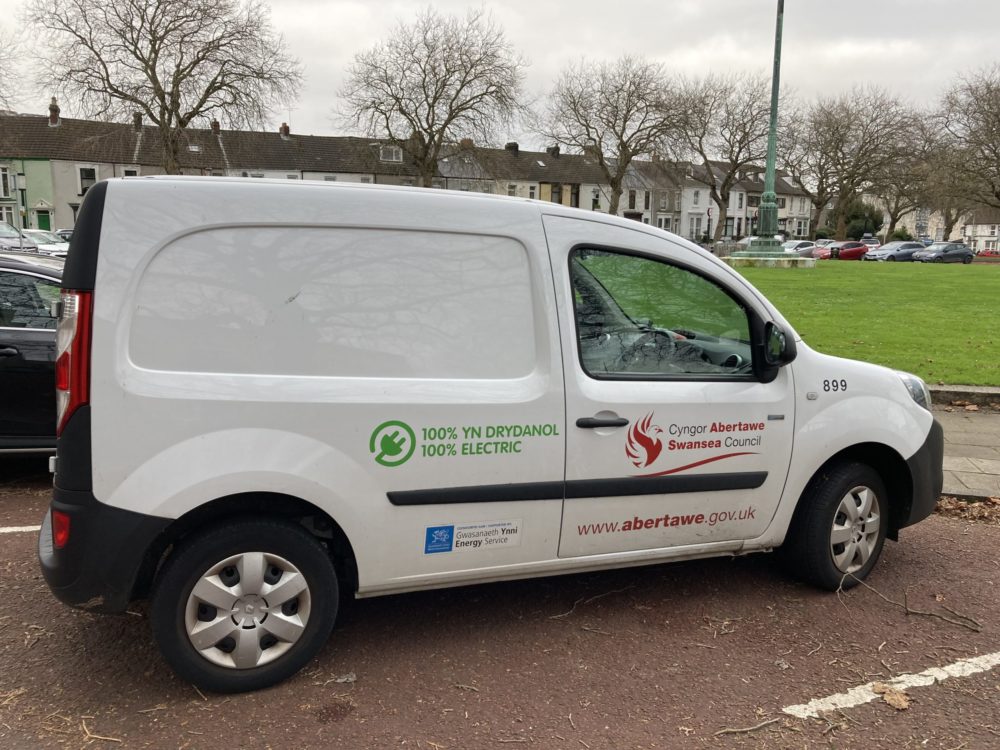Cost of replacing council’s fleet of vehicles with ‘green’ ones estimated at £50 million

Richard Youle, local democracy reporter
Replacing a council’s fleet of vehicles with “ultra low emission” alternatives would cost an estimated £50m, according to a report.
It also said the cost of retrofitting council-owned buildings in Swansea to make them more energy efficient and reduce their environmental impact was forecast to be £178m, up from £101m just a year previously.
The sums involved indicate the challenge facing the public sector in realising a Welsh Government ambition for public bodies to be “net zero” in terms of greenhouse gas emissions by 2030. The council has also set itself a target of being net zero in six years.
Progress
The report, discussed by Swansea council’s cabinet at a meeting on Thursday, December 12, said progress had been made in reducing the council’s environmental footprint since emissions in areas such buildings and energy, vehicle fleet and business mileage were first measured in 2019.
But substantial investment would be needed to really drive its footprint down, with the vehicle fleet being a case in point.
The council’s 1,053 vehicles include 113 battery-powered and 13 hybrid ones.
Renewing the entire fleet with known or potential environmentally-friendly alternatives, said the report, would cost around £50m plus £700,000 for new charging infrastructure.
It added that estimating these costs was very difficult given the impact of inflation and supply chain volatility and pricing, among other things.
Challenge
“It is a continuing challenge,” said Cllr Andrea Lewis, cabinet member for service transformation. “We are looking at our fleet and whether we can reduce it.”
The report said the council’s current policy of only replacing vehicles with diesel ones “by exception” was on hold due to a lack of funding and a solution to address home-charging for council workers.
The environmental impact of hard-to-heat school and other buildings is by far the biggest contributor to the council’s environmental footprint, and the most expensive to resolve.
The report didn’t go into too much detail about why the £101m estimate from last year had soared to £178m, but said it was based on the “last round of retrofit high-level assessments”.
Emissions
On the plus side, buildings emissions along with vehicle fleet and street lighting emissions have reduced in recent years.
The outlier is business travel, which has shot back up after Covid restrictions and is higher than before the pandemic. Cllr Lewis said the council was looking to reduce it.
The report said behavioural change was needed to underpin the net zero transition.
Last year, an energy-saving “tool kit” was trialled by managers at Gorseinon Library and housing services, and it resulted in a 40% emissions cut during a two-month period compared to the same two months the previous year.
Cllr Lewis said more money was needed from the Welsh Government to help the authority to reach net zero – a call backed by council leader Rob Stewart, although he welcomed what he said was a £30m allocation for net zero improvements for councils as part of the Welsh Government’s 2025-26 draft local Government settlement.
“We are making good progress on the things that we can make progress on and the things we are funded for,” said Cllr Stewart.
“We will do everything we can locally to make progress. We need to see government match their ambitions with cash.”
Support our Nation today
For the price of a cup of coffee a month you can help us create an independent, not-for-profit, national news service for the people of Wales, by the people of Wales.




